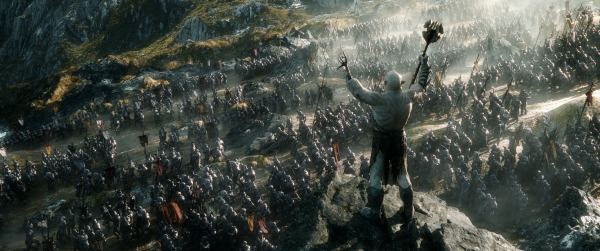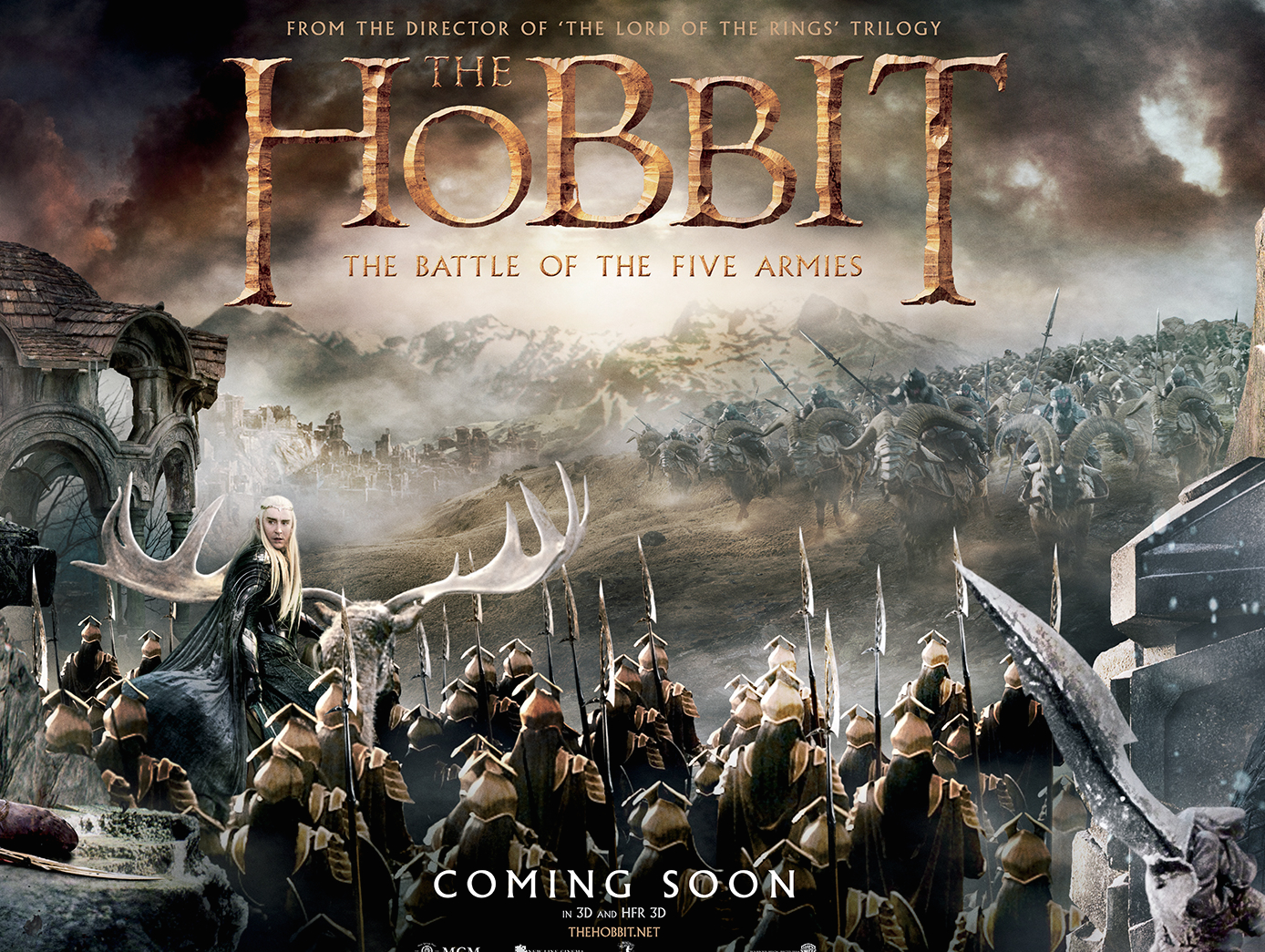The Hobbit: The Battle of the Five Armies is the third and final installment in Peter Jackson’s Hobbit film trilogy, and quite possibly the final installment in the Lord of the Rings film series as a whole. The film does an adequate job of wrapping up the series, and is worth watching for closure alone, but it falls short of being a great movie in its own right.
The film opens immediately where the previous film finished, with Smaug setting off to destroy Laketown. Samug’s incineration of the town is the first of many battle sequences. This initial sequence was satisfying, providing a strong combination of intense visuals and drama though it suffers from an unnecessary amount of exposition of the greed of the Master of Laketown and one of his advisers, Alfrid.
Once Smaug is slain, the movie enters what I have termed its Plot Section. Bard the Bowman, the slayer of Smaug and new leader of the people of Laketown leads the survivors to Erebor to ask Thorin to hold up his side of the bargain and aid them. The men of Laketown are joined by Thranduil’s army of elves and the forge an alliance. Thorin, overcome by dragon sickness refuses to part with a single piece of gold, inviting the joined armies of man and elf to attack, and continues his obsessive search for the Arkenstone. While all this is going on, two orc armies rise and begin to march on Erebor.
Bilbo slips into the camp of the humans and elves and offers them the Arkenstone, hoping that they will be able to sell it back to Thorin in exchange for the gold he promised them. Again, Thorin refuses. Just as the men and elves prepare to attack, and army of dwarves, led by Thorin’s cousin Dáin arrives. Again, just as the dwarf army is about to launch an attack, an army of orcs arrives and the film shifts into its third section, the Hour Long Battle Scene.
It is here that the movie begins to wear thin. While the battle should be an exciting and emotional affair it instead feels overdone and entirely too long. Whether I was watching Dáin headbutt orcs, despite the fact that he was still holding a perfectly functional warhammer, Legolas deftly running across and collapsing bridge, or Thorin being surprised by the orc leader Azog in the most absurd “you thought you killed me” moment that I have ever seen I found myself wondering when the battle would end. The whole thing was too exaggerated and over the top to take seriously. The length of the battle, almost a full hour of the 144 minute movie, made it wear thin. There are short reprieves from the combat to remind viewers of the plot, but these breaks are too few and too short to provide the audience time to get excited for the next fight.

The end of the battle brings the Hobbit trilogy to its epilogue, with Bilbo saying farewell to his friends and returning to the Shire. The film comes to a close on Bilbo’s 111th birthday, when he receives a surprise knock on the door from Gandalf, providing a lead in to the Lord of the Rings film trilogy.
Overall, I would not say that The Battle of the Five Armies is a bad film, but I would not go so far as to call it a good one. Fans of the series, and those who want to see the final movie so that they can give themselves some closure should be able to enjoy it for what it is. That said, those that have not seen the previous films, or who were hoping that this film would increase upon the quality of its prequels and bring the trilogy to a resounding conclusion will be disappointed.

